 Acura images
Acura images Acura
Acura| This manual contains owner maintenance; up-to-date specification charts; expanded index that helps you locate information FAST; wiring diagrams; vacuum diagrams; detailed procedures, specifications, exploded views and photos specifically .. |
 Hyundai 2010
Hyundai 2010 Hyundai
Hyundai Hyundai images
Hyundai images Hyundai pics
Hyundai pics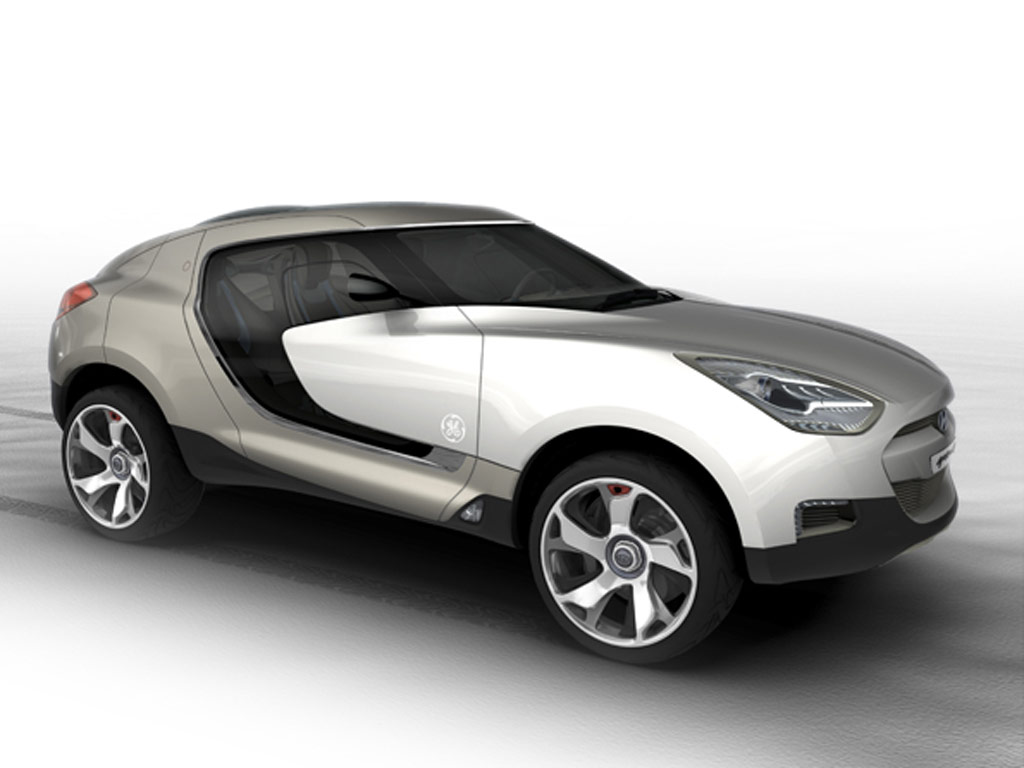 Hyundai cars
Hyundai cars
 The rumormill suggested that the new NSX was edging closer and closer to production, but today Autoblog confirmed that Honda has shelved the project. These are proving to be brutal times for Honda sports car and racing fans, as Honda earlier announced plans to sell its once promising Formula 1 team.
The rumormill suggested that the new NSX was edging closer and closer to production, but today Autoblog confirmed that Honda has shelved the project. These are proving to be brutal times for Honda sports car and racing fans, as Honda earlier announced plans to sell its once promising Formula 1 team. What the production NSX was to have been like was based on rumor and speculation-Honda did a fine job of keeping details under wraps, as they typically do. While this news is disappointing, the NSX filled a very small niche. Honda is hurting in a global recession, just as most manufacturers are. While sales are down, Honda was prepared for the economic downturn, with small, handsome, solid performers like the new Fit and the Civic. These cars are the focus of Honda currently, as well as the upcoming Insight hybrid.
Production of the last generation NSX ended in 2005, so it’s not as if Honda was feeling forced to rush a new NSX into production anyways. For the time being, the Nissan Skyline GT-R remains THE Japanese super-car. Once the economy sorts itself out eventually (we hope), Honda could revive plans to bring the NSX back. But for the time being, the NSX is not the right car for right now.
The modifying of your car can provide a welcomed focus and is certainly very enjoyable. There are many hobbies that appear superficially to follow a similar theme. Modifying a Pc and adding the latest parts, such as a new processor to increase performance is very similar to adding a new component to a car to increase speed and performance. Indeed, it can be said that to many of us, most things in life can come down to speed or performance in one way or another.
The topic that will never be far from this one is that of modified or performance car insurance. Of course if you modify and improve the performance of your car you will pay a higher premium price. Nevertheless, for some of us it can be a struggle to find a car insurance company even willing to insure a modified or performance car in the first place. Then you will have to consider paying an extortionate amount to cover your car, leaving most us a nervous wreck.
 The problem lies mainly in the engine modification department. Changes to exterior fittings such as tailgate spoilers, new alloy wheels and body kit will make a noticeable difference in your premium, but at least this is an area most insurance companies are willing to cover. When it comes to engine modifications and cars with extremely powerful engines, a lot of them will not even enter into giving you a quote.
The problem lies mainly in the engine modification department. Changes to exterior fittings such as tailgate spoilers, new alloy wheels and body kit will make a noticeable difference in your premium, but at least this is an area most insurance companies are willing to cover. When it comes to engine modifications and cars with extremely powerful engines, a lot of them will not even enter into giving you a quote.If you have added only exterior items or changed the in-car entertainment system then you can pretty much go ahead and search through quotes in the usual manner. You must remember to ring the car insurance company you have chosen after selecting the best quote for your car as standard. I would suggest picking several of the better value for money quotes, ensuring they give you the coverage your looking for (remember cheapest is not always best) and then ringing the company to continue the quote and give details of your modification. You should find most companies are pretty modification friendly as long as there only minor changes.
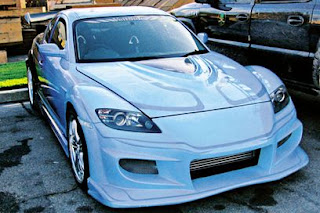 If you have modified you engine by way of a chip, induction kit or similar then things start to get a little trickier. This is also the case with having a generally high-powered performance engine. Many mainstream insurers will not insure a car with engine modifications or a high-powered car with a young driver. Here you will be best to follow the same procedure as above and seek quotes from specialist insurers. You may find the process a little slower but you will be rewarded with a more tailored and possibly cheaper policy.
If you have modified you engine by way of a chip, induction kit or similar then things start to get a little trickier. This is also the case with having a generally high-powered performance engine. Many mainstream insurers will not insure a car with engine modifications or a high-powered car with a young driver. Here you will be best to follow the same procedure as above and seek quotes from specialist insurers. You may find the process a little slower but you will be rewarded with a more tailored and possibly cheaper policy.Above all, you must remember to be honest to your insurer. Something as small as misinforming the insurer as to where you car will be kept overnight can be seen as fraud. Altering details to give yourself a cheaper policy, if not accurate, will ultimately result in voided insurance when the issuing company finds out.
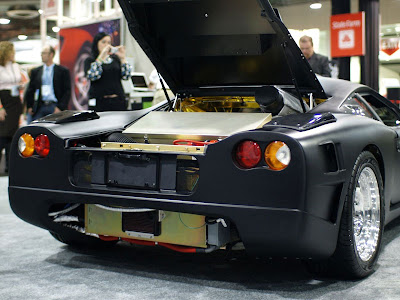 The CMT-380 features lithium-polymer battery cells that can be charged at home or at a public recharging station. While driving, the CMT-380 can operate on 100 percent battery power in zero emissions mode for a range of up to 80 miles. When the batteries reach a predetermined state of discharge, the Capstone C30 microturbine quietly fires up and recharges the batteries on the fly to extend the driving range up to 500 miles. The diesel fueled C30 microturbine requires less maintenance than traditional combustion engines and produces ultra-low exhaust emissions. Hilleman has owned an electric vehicle – a converted Porsche 550 Spyder – for at 15 years and has constantly upgraded it. The EV used to have just 30 hp with lead acids but now uses lithium ferrous batteries and has 200 hp. The 100-mile range hasn't changed, though, and so he knew it was time to build a hybrid. He decided on Capstone's diesel microturbines as the range extender.
The CMT-380 features lithium-polymer battery cells that can be charged at home or at a public recharging station. While driving, the CMT-380 can operate on 100 percent battery power in zero emissions mode for a range of up to 80 miles. When the batteries reach a predetermined state of discharge, the Capstone C30 microturbine quietly fires up and recharges the batteries on the fly to extend the driving range up to 500 miles. The diesel fueled C30 microturbine requires less maintenance than traditional combustion engines and produces ultra-low exhaust emissions. Hilleman has owned an electric vehicle – a converted Porsche 550 Spyder – for at 15 years and has constantly upgraded it. The EV used to have just 30 hp with lead acids but now uses lithium ferrous batteries and has 200 hp. The 100-mile range hasn't changed, though, and so he knew it was time to build a hybrid. He decided on Capstone's diesel microturbines as the range extender.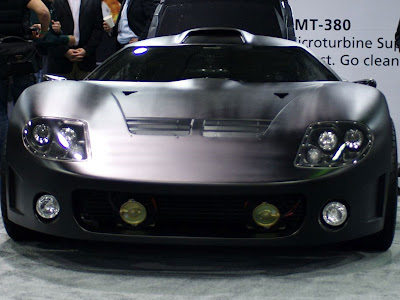 He knew he could rely on them – they've been used in buses for years – but there was still the challenge of fitting the unit into a car like this. Hilleman built the CMT-380 just for himself, but Capstone is happy to show it off as a proof of concept vehicle. It would be too pricey to put into mass production (Hilleman estimated he put in about $375,000 hours of work), but it's not impossible that a high-end, expensive, limited production run could be made some day.
He knew he could rely on them – they've been used in buses for years – but there was still the challenge of fitting the unit into a car like this. Hilleman built the CMT-380 just for himself, but Capstone is happy to show it off as a proof of concept vehicle. It would be too pricey to put into mass production (Hilleman estimated he put in about $375,000 hours of work), but it's not impossible that a high-end, expensive, limited production run could be made some day.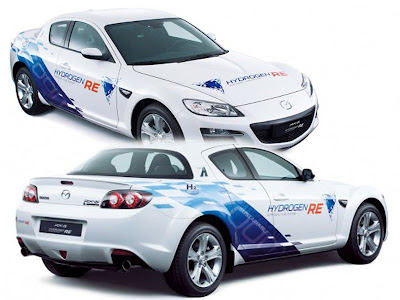 Right now, Hilleman is really happy with his creation. He especially loves the sound of the vehicle. Three feet to the side of the car, the microturbine puts out about 87 dB, but in the cabin, it's nearly silent. California law might require him to add a muffler, but it's already quiet enough without one. He's got a solution for that problem, should he need it.
Right now, Hilleman is really happy with his creation. He especially loves the sound of the vehicle. Three feet to the side of the car, the microturbine puts out about 87 dB, but in the cabin, it's nearly silent. California law might require him to add a muffler, but it's already quiet enough without one. He's got a solution for that problem, should he need it.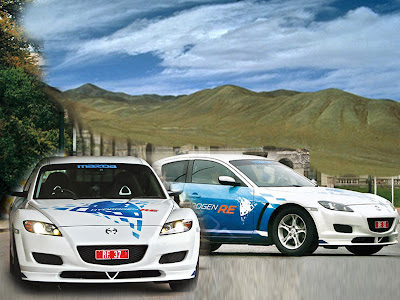 The initial opening ceremony will be held in Oslo on May 11, 2009. The RX-8 Hydrogen RE will then undergo certification to meet local standards and will be used for maintenance staff training. Mazda plans to commence leasing of Norwegian specification RX-8 Hydrogen RE models in Norway in summer 2009.
The initial opening ceremony will be held in Oslo on May 11, 2009. The RX-8 Hydrogen RE will then undergo certification to meet local standards and will be used for maintenance staff training. Mazda plans to commence leasing of Norwegian specification RX-8 Hydrogen RE models in Norway in summer 2009.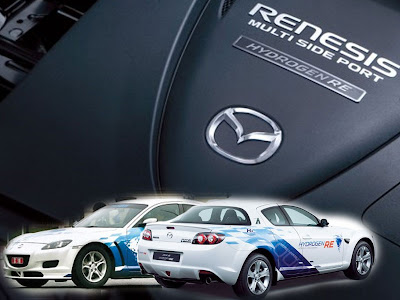 Unlike the RX-8 Hydrogen RE currently being leased in Japan, the HyNor-specification Mazda RX-8 Hydrogen RE is based on the latest European-specification Mazda RX-8 with left-hand drive and a manual transmission.
Unlike the RX-8 Hydrogen RE currently being leased in Japan, the HyNor-specification Mazda RX-8 Hydrogen RE is based on the latest European-specification Mazda RX-8 with left-hand drive and a manual transmission.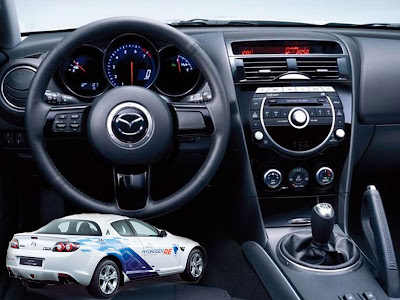 Mazda agreed to collaborate with HyNor on the project in November 2007 and began validation of the RX-8 Hydrogen RE’s driving performance on Norwegian public roads in October 2008.
Mazda agreed to collaborate with HyNor on the project in November 2007 and began validation of the RX-8 Hydrogen RE’s driving performance on Norwegian public roads in October 2008.
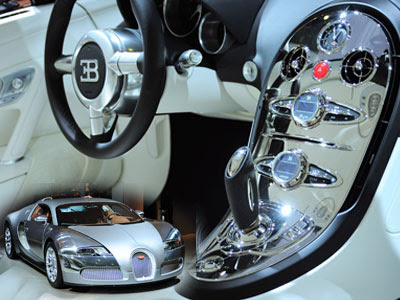 The Bugatti Veyron Bleu Centenaire shares all performance characteristics of other Veyron models performance-, acceleration- and deceleration characteristics which have been highly praised ever since the Bugatti Veyron first appeared on the scene. The car will cost 1,35 Million Euro exclusive taxes and transportation. The presentation of these very special cars at the Dubai Motor Show is the final highlight, with which Bugatti ends its Centenary celebrations. We are honoured to complete our 100 Years at this prestigious Motor Show of a very important market for Bugatti.
The Bugatti Veyron Bleu Centenaire shares all performance characteristics of other Veyron models performance-, acceleration- and deceleration characteristics which have been highly praised ever since the Bugatti Veyron first appeared on the scene. The car will cost 1,35 Million Euro exclusive taxes and transportation. The presentation of these very special cars at the Dubai Motor Show is the final highlight, with which Bugatti ends its Centenary celebrations. We are honoured to complete our 100 Years at this prestigious Motor Show of a very important market for Bugatti.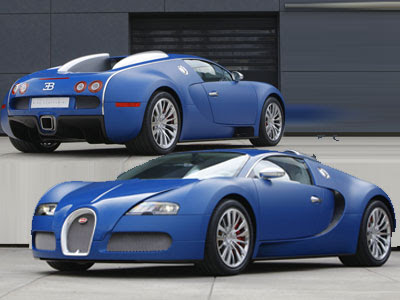
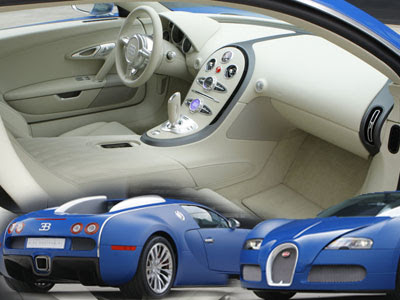 Building on the marque's core values of « Art - Forme - Technique » , Bugatti Automobiles S.A.S. has created the Bugatti Veyron Bleu Centenaire, a unique model to celebrate the hundred year old history of the company. This special model takes up the traditional Bugatti two-tone-specification, but portrays it in one rather than two colours: in the most known light shaded Bugatti blue. The Centenaire's unique combination of a « sprintblue matt » and « sprintblue gloss » hence offers a new impression of the two-tone-scheme known so far with parts of the engine also covered in this traditional Bugatti Blue.
Building on the marque's core values of « Art - Forme - Technique » , Bugatti Automobiles S.A.S. has created the Bugatti Veyron Bleu Centenaire, a unique model to celebrate the hundred year old history of the company. This special model takes up the traditional Bugatti two-tone-specification, but portrays it in one rather than two colours: in the most known light shaded Bugatti blue. The Centenaire's unique combination of a « sprintblue matt » and « sprintblue gloss » hence offers a new impression of the two-tone-scheme known so far with parts of the engine also covered in this traditional Bugatti Blue.
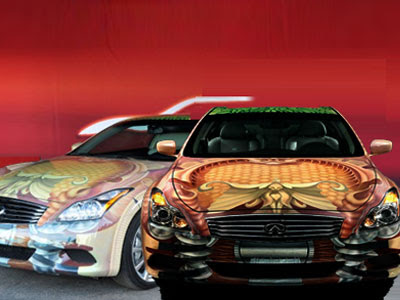 Infiniti’s partner and inspiration for the G Coupe Anniversary design concept, Cirque du Soleil, is celebrating its 25th anniversary this year and was also present at the unveiling.Heidi Taillefer’s “Ligozzi” design was selected among few other artists designs specially asked to submit an exterior concept for the Infiniti G Coupe.
Infiniti’s partner and inspiration for the G Coupe Anniversary design concept, Cirque du Soleil, is celebrating its 25th anniversary this year and was also present at the unveiling.Heidi Taillefer’s “Ligozzi” design was selected among few other artists designs specially asked to submit an exterior concept for the Infiniti G Coupe.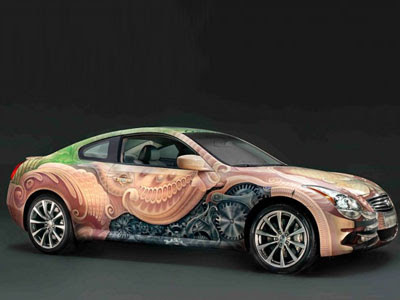 “Celebrating 20 years of Infiniti is an important milestone and we wanted to do something truly unique and representative of the Infiniti brand to commemorate this occasion,” said Wendy Durward, Director of Infiniti Canada. “The intricate, beautiful design is an expression of Infiniti’s commitment to Inspired Performance in everything we do.”
“Celebrating 20 years of Infiniti is an important milestone and we wanted to do something truly unique and representative of the Infiniti brand to commemorate this occasion,” said Wendy Durward, Director of Infiniti Canada. “The intricate, beautiful design is an expression of Infiniti’s commitment to Inspired Performance in everything we do.”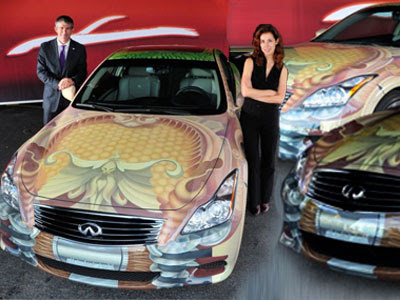 Montreal artist Heidi Taillefer created the design and spent almost one month hand-painting the exterior of the vehicle.Unique Infiniti G37 Anniversary Art Project Vehicle commemorated the Infiniti’s 20th Anniversary.
Montreal artist Heidi Taillefer created the design and spent almost one month hand-painting the exterior of the vehicle.Unique Infiniti G37 Anniversary Art Project Vehicle commemorated the Infiniti’s 20th Anniversary.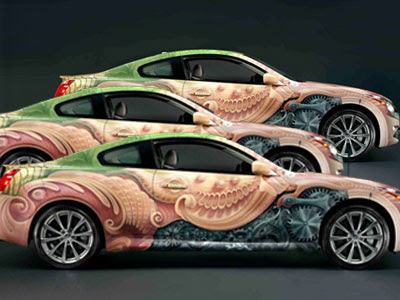 Infiniti Canada revealed the Infiniti G37 Anniversary Art Project Vehicle at the 14th Annual Canadian Art Gallery Hop Gala in Toronto. To commemorate Infiniti’s 20th anniversary, Infiniti Canada partnered with Cirque du Soleil(R) to create a one-of-a-kind G37 Sport Coupe.
Infiniti Canada revealed the Infiniti G37 Anniversary Art Project Vehicle at the 14th Annual Canadian Art Gallery Hop Gala in Toronto. To commemorate Infiniti’s 20th anniversary, Infiniti Canada partnered with Cirque du Soleil(R) to create a one-of-a-kind G37 Sport Coupe.